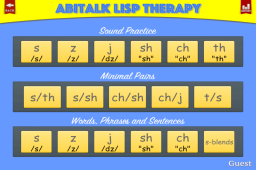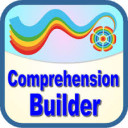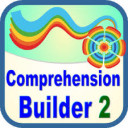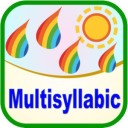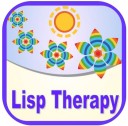Speech Therapy Apps from Abitalk
By Angie Gorz on April 14, 2015 in Informative Blogs Uncategorized with No Comments
Abitalk has recently released five different applications designed to help Speech Language Pathologists in their quest to help children improve comprehension, articulation, speech production, receptive and expressive speech and more. These apps are groundbreaking and like no others you will find on the app store! They range from assisting children, who have a range of developmental delays that affect speech, learn to build sentences to aiding Speech Language Therapists tackle the challenge of treating front and lateral lisps. Take a look at the five apps that Abitalk currently offers for Speech Therapy. You will not be disappointed.
Comprehension Builder – English Language Learning and Speech Therapy App is designed to help children learn “Wh” questions. This app is aimed at children with Autism and developmental disorders that affect speech. It offers three difficulty levels, as well as gradually fading visual prompts for the sentence building activity. Comprehension Builder also offers sentence structure of various complexity, the ability to add custom content and share it with Dropbox. The options to add and track multiple users and customize the app for each user make this app a must have for every S.L.P.!
Download from the Apple Store today- http://apple.co/1FIFmvc
Download from Google Play today- http://bit.ly/1H1VhDO
Download from Amazon today- http://amzn.to/1CISysI
Download from Barnes & Noble Today- http://bit.ly/1GFnotR
Comprehension Builder 2 – WH Question App for English Language Learning and Speech Therapy is a fantastic follow-up to Comprehension Builder and is aimed at helping children learn to comprehend and build “Wh” questions. Children start off working on sentences that include “who”, “is doing”, “what”, and “where”, and gradually work up to sentences that include “why” and “how”. Visual Supports for the sentence building activity are gradually removed. The app includes the ability to add custom created content and share via Dropbox, track data for multiple users, and customize the app for each user!
Download it from the Apple store today- http://apple.co/1I8B0uO
Download it from Amazon- http://amzn.to/1FPkAY3
Download it from Google Play- http://bit.ly/1DdhImQ
Download it from Barnes & Noble- http://bit.ly/1zbIvwb
Sentence Builder for Special Needs Children is designed to help those with special needs learn to build sentences, work on basic punctuation, capitalization, and more. In the app, the child is shown a graphic, and a sentence is spoken. Then, the child needs to drag the words into the correct order to make them into a sentence. There are three difficulty levels in the app and quite a bit of content. At level one, sentences are simple and only the words the child needs are shown. By level three, additional punctuation is shown and extraneous words are added to the mix. Sentence Builder for Special Needs allows for the addition of custom data and sharing by way of Drop Box. Also, this app supports data tracking multiple users and customization for each user within the app! Download on the Apple Store- http://apple.co/1kYDXC6
Multisyllabic with words, phrases and sentences for speech therapy and special need education is specifically designed to help children learn to articulate two to five-syllable words. The app uses visual, tactile, and auditory cues to help children break down longer words into each syllable, which as you know, can be difficult for children with Apraxia of Speech, Autism and various speech disorders. In the first level, there is a large graphic showing a word, and the child must tap it three times, if it has three syllables, for example. Syllables are spoken as they are tapped, and the word is spoken after the child drags the syllables into their correct positions. In phrases, the child will hear phrases with a visual cue, in the form of a picture. When the picture is tapped, the word is shown and spoken. In record mode, the user records each phrase. Sentences add in more length in a full sentence, more punctuation, and again the option to record. There are many word lists in the app, including animals, people, geography, transportation, food, an U.S. states, but teachers and S.L.P.s can also chose to sort words by phonemes and their position in the word (initial , medial, and final). This app also allows for customization, including turning on or off the bonus award, the sound upon tapping an image, correction answer reinforcement, and audio instructions to make a word. Multiple users are supported, as is data tracking.
Download from the Apple Store today- http://apple.co/1CS3e8Q
Download from the Amazon Store today- http://amzn.to/1GFmFJe
Download from Barnes & Noble Today- http://bit.ly/1zbH8xr
Lisp Therapy by Abitalk is a state of the art app, carefully crafted to help Speech Language Pathologists to treat an issue that can be challenging, frontal and lateral lisp. This app offers many ways to help children who have a lisp, including exercises for jaw placement, lateral tongue strength, and more, with narrated explanations and helpful video demonstrations. In addition, there is a section of sound practice and a second that utilizes a minimal pairs approach. In the third section, students practice at the word, phrase and sentence level with the therapeutic exercises are in form of fun games! Lisp Therapy offers the option to record and play back audio for each sound in the practice, minimal pairs, flash card, phrases, and sentences, in the iOS app only. There is an option to record and playback video for each sound in the sound practice section of the iOS app. Smarty Symbols help to clarify words that some children may not be able to read, and there are settings to customize the app for each user. Lisp Therapy was created with a Certified Speech Language Pathologist and contains a section with visual and audio supports for placement of each sound. Sounds commonly affected by a lisp include /s/ and /z/ for frontal lisp and “sh”, “ch”, and “j” for lateral lisp. Download it today on the Apple App store!- http://apple.co/1z9rlzd
Be sure to enter Abitalk’s Giveaway of Lisp Therapy- http://on.fb.me/1CYu8f9
Read this review and enter this Giveaway of Lisp Therapy today!: http://bit.ly/1IYWXN7
Facebook Feed
Featured App
Sentence Builder - Kindergarten, First Grade, Second Grade
A fun new sentence builder app to learn about words, sentences, pronunciation, grammar, and punctuation.
The ONLY sentences app that can be fully customized with your own pictures, words and sentences.
We worked closely with teachers, parents and kids to design and test this app.
Read more
Latest App
Physical Science for Second Grade
![]()
- The ONLY app that allows the users to CREATE their own stories, questions and add their own images.
- The ONLY app that READS the stories, comprehension questions and choices.
Reading Comprehension Physical Science for Second Grade has twenty stories about the physical science related young children's daily life. You can also create and add your own stories to the app.
Read more
© Copyright 2025. All rights reserved. Powered by AbiTalk.

